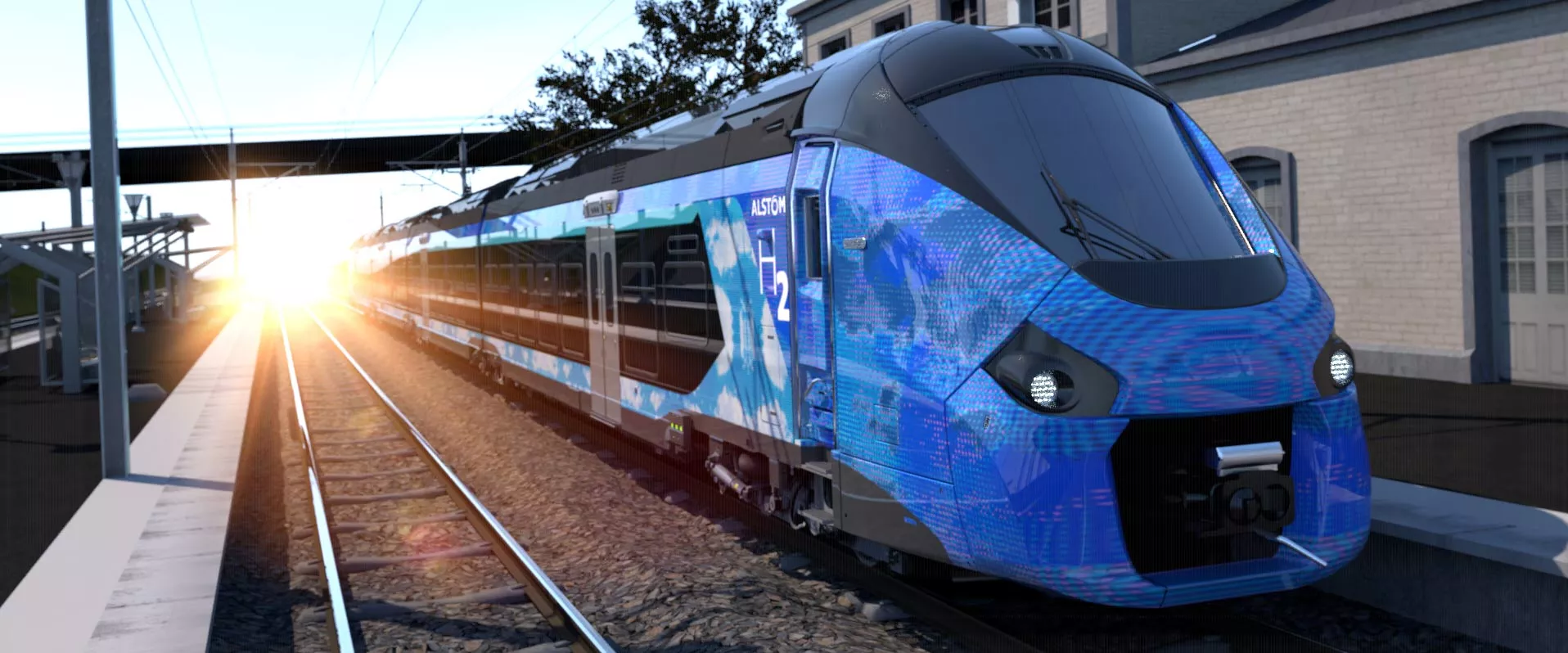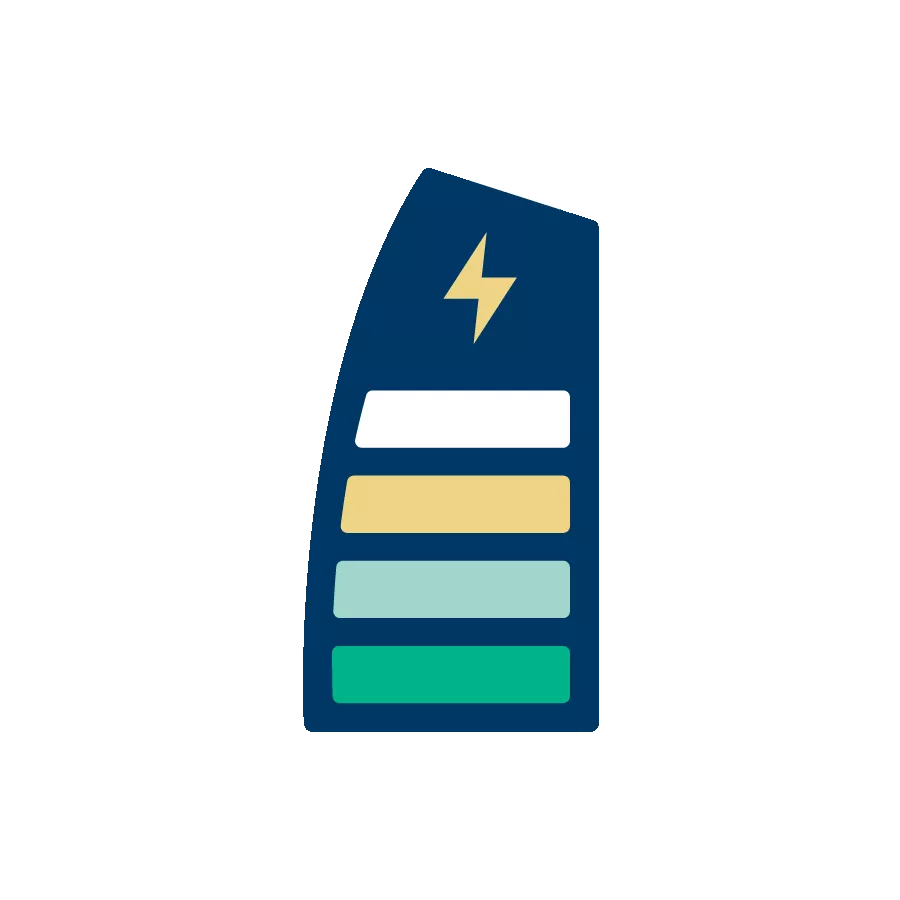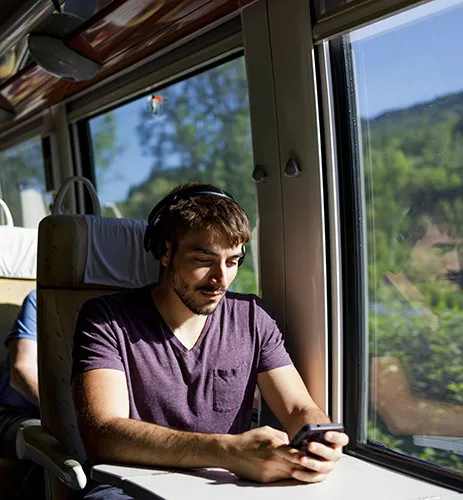
First hydrogen TERs arriving in stations in 2026
Four French regions have ordered 12 Régiolis H2 trains, and validation testing of a pre-series train has started in 2024 and is pursued in 2025. We take a closer look at these innovative regional trains, set to enter commercial service by the end of 2026, or the beginning of 2027.
12 Régiolis H2 trainsets on order
In March 2021, 4 French regions—Auvergne-Rhône-Alpes, Bourgogne-Franche-Comté, Grand Est and Occitanie—ordered dual-mode trainsets powered by electricity and hydrogen. Total cost for the project is €231 million.

Soon
12
Régiolis H2 regional trains will replace diesel units

Diesel accounts for
26%
of the TER fleet’s energy consumption

Diesel currently generates
77%
of the TER fleet’s CO2 emissions
Our commitment to the planet
The first hydrogen TERs are set to begin commercial operation from the end of 2026, or the beginning of 2027. The shift to hydrogen is just one part of our commitment to eco-friendly mobility. At SNCF, we’ve spent years working with manufacturers to develop cleaner TER trains.
Where to find the Régiolis H2
- the Auvergne-Rhône-Alpes region will operate 3 trainsets on the Moulins–Clermont-Ferrand–Brioude line and the Lyon–Roanne–Clermont-Ferrand line.
- the Burgundy-Franche-Comté will operate 3 trainsets on the Dijon–Laroche-Migennes–Auxerre–Avallon line and the Dijon–Laroche-Migennes–Auxerre–Corbigny line.
- the Occitanie region will operate 3 trainsets on the Toulouse–Montréjeau–Luchon line.
- the Grand Est region might operate 3 trainsets on the Colmar - Metzeral line but it is yet to be confirmed.

The H2 will have
600 km
of range in the hydrogen version

It can carry
220
passengers

It can reach
160 km/h
running speed, the same speed as diesel TERs
How it works
In hydrogen trains, conventional diesel engines are replaced with fuel cells, batteries and hydrogen tanks. In the fuel cell on the H2 train’s roof, hydrogen from the tanks combines with oxygen in the air to produce electricity and power the train. And there’s only one waste product: water.
Our commitment – hydrogen trains
Project milestones
Share the article